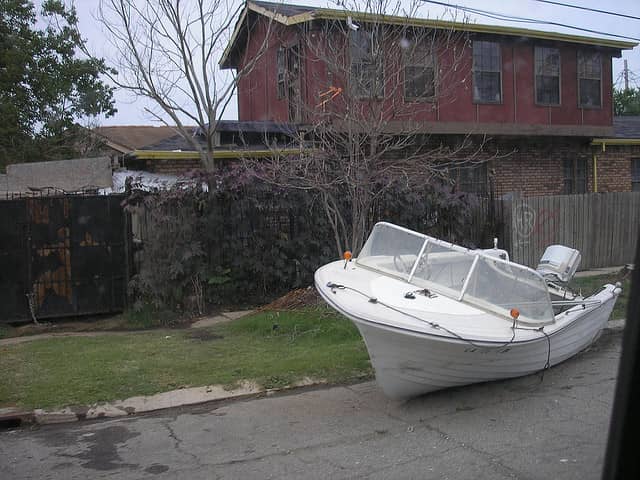BoatUS’ Helpful Hurricane Boat Storage Tips
OutdoorHub 09.12.11

Alexandria, Va. September 12, 2011 – As hurricanes approach the US mainland, it used to be that boaters on the coast only had to worry about making storm preparations. However, Hurricane Irene’s large destructive path recently showed that trailer boaters located far inland need to make preparations as well. For those who keep a trailer boat in their backyard, driveway or marina parking lot, Boat Owners Association of The United States (BoatUS) has these helpful hurricane storage tips as we enter the “peak” 2012 hurricane season, which runs through November 30.
Do a trailer check-up now: Inspect your trailer today to ensure it will be operable when it’s needed. Bearings should be greased, tires inflated and lights working.
Plan your escape: Map out an evacuation route and make the decision early if you are planning to take the boat with you or leave behind. Bridges may have restrictions on towing boats.
When the Storm Strikes
Take it home: Remove all loose gear such as fenders, cushions or any extra other equipment and gear like rods, tackle boxes and electronics and store at home. This includes the boat’s papers.
The boat “wins” the garage: If you have a choice of putting the boat or car in the garage, pick the boat. That’s because a boat is lighter and more vulnerable to winds. If you have to store a trailer boat outside, placing the rig next to a building (on the lee side of approaching storm) for protection is good. Keep it away from trees.
Tilt me: Remove the transom and any cockpit drain plugs and tilt the trailer tongue up so any water entering the boat exits aft through scuppers or a drain hole. Let some air out of the trailer tires and chock the wheels.
Twist me: Secure gas tank caps tightly to prevent water from entering. Secure any hatches.
Bye bye bimini: Remove the bimini. Trailerable sailboats should have their masts lowered, safely lashed and any sails removed. Towing or mooring covers should be installed and secured with extra line.
Strap me: Secure the boat to the trailer with line or straps. If you have the ability, anchoring the boat and trailer rig with screw-type ground anchors adds extra protection.
Fill up the little guy: Small, lightweight and simply-built outboard powered boats and paddle craft can be placed on the ground and partially filled with a garden hose to add weight. (Rain will add a lot more water later.) This has the added advantage of giving you emergency water (non-drinking). If you choose to keep the boat on top of a trailer, ensure you add blocks between the trailer frame and springs to support the added weight.
Lift me down: Whenever possible, boats on lifts should be stored ashore or moved to a safer location in the water. If the boat must be left on its lift, remove the drain plug so the weight of accumulated rainwater will not collapse the lift. Tie the boat securely to its lifting machinery to prevent the boat from swinging or drifting away. Plug the engine’s exhaust outlet and again, strip the boat. Make sure cockpit drains are free of debris.
About BoatUS:
BoatUS – Boat Owners Association of The United States – is the nation’s leading advocate for recreational boaters providing over half a million members with government representation, programs and money-saving services. To help boaters make hurricane preparations, BoatUS has some free online “tools” available at the BoatUS Hurricane Resource Center at www.BoatUS.com/Hurricanes. For membership information visit www.BoatUS.com or call 800-395-2628.

